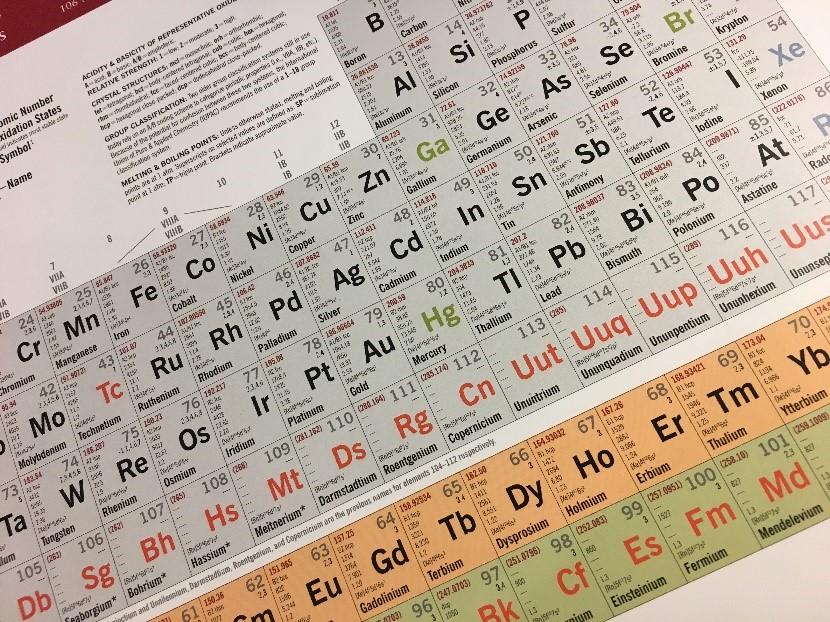A “Periodic” Change
December 20, 2016
As of November 28, 2016, the Periodic Table of Elements was released with four new elements: nihonium (Nh), moscovium (Mc), tennessine (Ts) and oganesson (Og). They now occupy the atomic numbers 113, 115, 117, and 118, respectively.
These elements are not found in nature. They were synthesized in a laboratory, and, due to their short half-lives, decay quickly. For years, they assumed temporary names and symbols because it was difficult for scientists to prove their existence. This is no longer the case.
Nihonium was first discovered at RIKEN Nishina Center for Accelerator-Based Science in Japan in 2003. It is extremely radioactive and its most stable isotope, nihonium-286, has a half-life of 20 seconds. It is also classified as a metal and is a solid at room temperature. The name “nihonium” name connects the element to the nation is which it was discovered; “nihon” means “Japan” in Japanese. Before its official acceptance onto the Periodic Table of Elements, element 113 had been given the placeholder name “ununtrium,” which means “one-one-three” in Latin.
Element 115 was first discovered in 2003. Moscovium was synthesized by a team of Russian and American scientists at the Joint Institute for Nuclear Research in Russia. It is very heavy and reactive, and its most stable isotope, moscovium-289, has a half-life of only 220 milliseconds. It is classified as a metal and is solid at room temperature. Previously occupying the placeholder name ununpentium (or “one-one-five” in Latin), Moscovium was named in recognition of the Moscow region in Russia.
Tennessine was discovered at the Flerov Laboratory of Nuclear Reactions in Russia in 2009. It had temporarily been called ununseptium, or “one-one-seven” in Latin, before its official acceptance as an element on the Periodic Table. Although it was discovered in Russia, Tennessine was named in honor of the Tennessee Region, where Oak Ridge Laboratory, Vanderbilt University, and the University of Tennessee in Knoxville made important contributions to its surrounding research. Tennessine is a halogen, a solid at room temperature, and is the heaviest element ever created.
Like Moscovium, element 118 was discovered also at the Joint Institute for Nuclear Research in Russia. Oganesson is a non-metal and a member of the noble gas group. First synthesized in 2002, this element had initially been given the placeholder name of ununoctium (“one-one-eight” in Latin). Oganesson was named to honor Professor Yuri Oganessian, who had made crucial contributions to its discovery.
The Periodic Table of Elements is not as stagnate as many assume. In the past 20 years alone, adjustments have been made in not only the total number of elements on it but also in the atomic masses of several elements. The next “periodic” change is yet to come.



